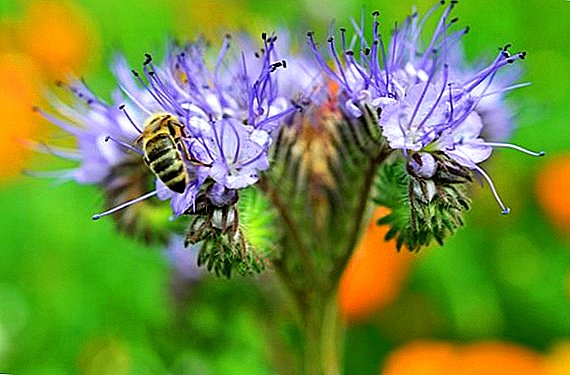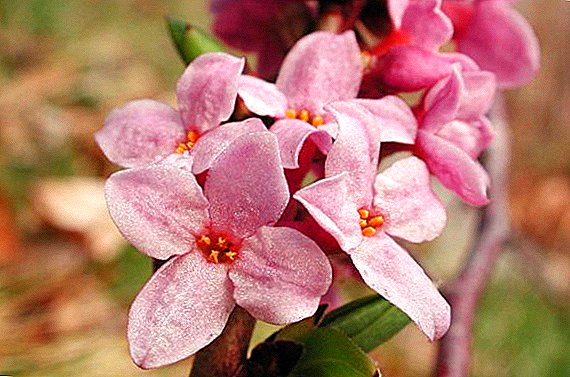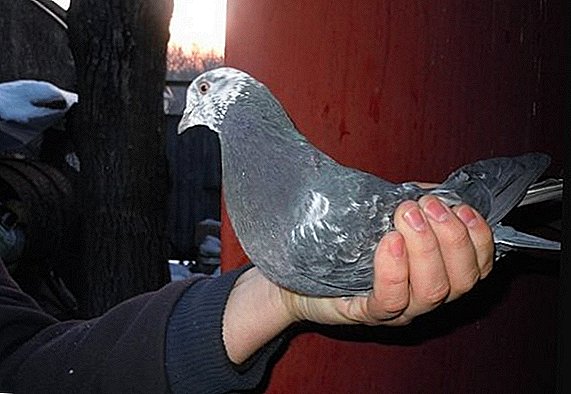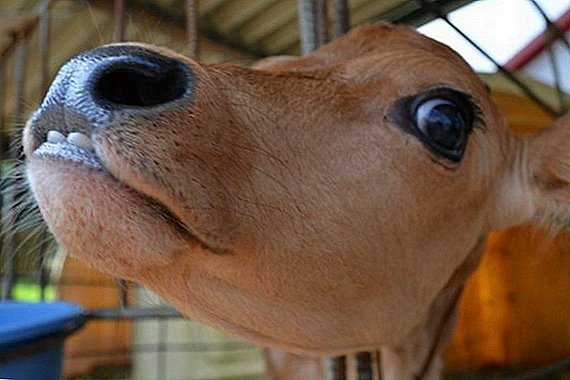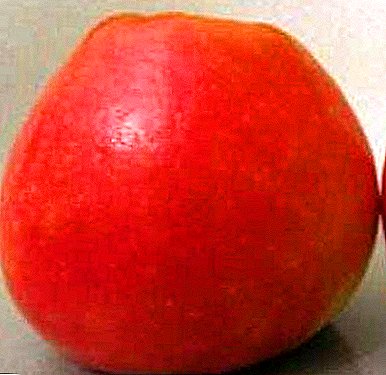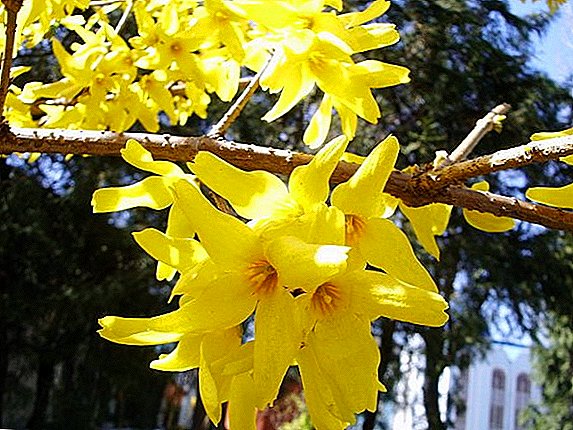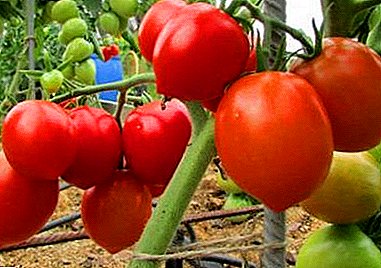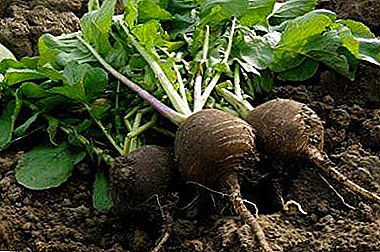
Black winter radish has a burning, bitter taste. An invaluable source of vitamins and nutrients, superior in quality to other types and varieties of radish. It is an indispensable supplement to the diet during the cold season.
Never heard of such a variety? It's time to meet you! We'll tell about it all from the appearance, appearance and ending with the use in traditional medicine. In addition, we will share varieties that are very similar to black winter radish in taste and are also incredibly useful.
Detailed feature
Appearance
 The leaves of a black winter radish dissected, green with a grayish tinge, rough.
The leaves of a black winter radish dissected, green with a grayish tinge, rough.
The plant has small flowers, purple. Inflorescences racemes, neat. In fruit - pod ripens up to 10 grams of round, the correct form of seeds.
Root crops are round, weighing 200 - 500 g, with a diameter up to 10 cm. The peel is thin, smooth, dense, black color. The flesh is incredibly juicy, has a slightly pungent, tart, burning taste.
Vegetable has excellent keeping quality. On the time of planting, storage time and the use of the root will be discussed later in the article.
When to plant?
Varieties of winter round radish mid-season. The optimal landing time - the end of June - early July.
When the radish is sown too early, the roots lose juiciness, become dense, crack, yield decreases.
What is the yield?
Black winter radish has a high yield. On average, up to 35 - 45 tons of root crops are harvested from 1 ha (3.5-4 kg per 1 sq. M).
Where is it recommended to grow?
Radish winter black is grown only in open ground. It grows even in the northern regions. Culture requires good light, grows poorly in the shade.
It is better to grow after:
- carrots;
- cucumbers;
- tomatoes;
- potato
Do not sow after cabbage and radish, the probability of contamination of the soil by pests and infections.
You can do sowing between the rows of onions, cucumbers and potatoes.
Disease resistance
Varieties of winter black radish unpretentious, resistant to disease. For a healthy harvest, only large seeds should be used. Immediately before planting, the seed is soaked for 1 hour in a solution of manganese or in any growth promoter.
Ripening
The black winter radish ripens in 75 - 80 days from the moment of sowing (average term of ripening).
What kind of soil does it prefer?
 The composition of the soil is not demanding vegetable. The soil should be:
The composition of the soil is not demanding vegetable. The soil should be:
- loose;
- easy;
- slightly acidic;
- nutritious.
Root crops will be juicier if mineral fertilizers are added to the soil before planting - a mixture of superphosphate, potassium chloride, urea (3: 1: 1).
Soil dug up in autumn and spring, just before sowing. This is done to make the ground as loose as possible.
Breeding history
Valuable vegetable came to us from the East. Black winter radish are grown in Russia since the 12th century.
In ancient Russia, the root crop was considered a useful and healing product.. Classify early, mid-ripening and late subspecies of culture.
What is the difference from other types of vegetables?
- Winter black radish can be grown even in the cool climate of the northern regions of the country, in Siberia.
- Differs special sharp - sweet taste.
- Varieties of this variety of radish are most suitable for winter storage.
- Feature of growth: root vegetables, unlike other types of radish, are fully immersed in the soil.
Advantages and disadvantages
The composition of root crops are substances with antimicrobial action. Winter black radish - a natural antibiotic.
It contains many:
- vitamins;
- minerals;
- essential oils;
- glycosides;
- phytoncides, etc.
Root juice:
- treats colds, urolithiasis;
- has a choleretic effect;
- heals ulcers and wounds.
It is forbidden to use raw with a stomach ulcer, gastritis, acute inflammation of the liver, kidneys, heart failure.
What and where is it used for?
 It is used in salads and cold snacks. Winter black radish boosts immunity, strengthens the nervous system, positively affects the general condition of the body.
It is used in salads and cold snacks. Winter black radish boosts immunity, strengthens the nervous system, positively affects the general condition of the body.- From the gruel of root crops do regenerating masks for hair and nails. Warming compresses from crushed pulp treat pneumonia, bronchitis.
- Used in folk medicine - radish with honey relieves coughing attacks, heals whooping cough, sore throat and runny nose.
- Juice of black winter radish mixed with honey, vodka and salt relieves swelling in the joints.
- It is a prophylactic against the appearance of malignant tumors.
Growing up
- Before planting, they dig up the soil to a depth of 30 cm.
- Peat, humus and compost are embedded in the soil.
- Form furrows or holes.
- The distance between plants is 15-20 cm, between rows - up to 30 cm.
Seeding scheme:
- Seeds deepened by 2 - 3 cm.
- In each nest 2 - 3 seeds are sown.
- After germination in the nest leaves the strongest sprout.
- After 2 - 3 weeks re-thinning of the crop is required.
Sowing regularly moistened, powdered with ash to disinfect the soil. Further watering is abundant (up to 10 liters per 1 sq. M), once a week. The soil should be loosened and weeded after each watering.
Fresh organic fertilizer can not be used, the roots are cracked.
Grown root vegetables must be gently swayedso that they eat only through the taproot. Fertilizers are applied every 2 to 3 weeks. It is better to use mineral supplements:
- superphosphate;
- potassium;
- saltpeter.
Be sure to make fertilizers with boron and magnesium to improve the sugar content of root crops. 3 weeks before harvesting, feeding stops.
Harvesting and storage
 Root crops are harvested before the onset of frost. Frozen vegetables are not suitable for storage.
Root crops are harvested before the onset of frost. Frozen vegetables are not suitable for storage.
Leaves should be cut off, dried roots. The harvest is stored in wooden boxes, containers, dark packages in the cellar. Drawers should be made in the boxes for air ventilation.
The optimum storage temperature is 1 - 2 ° C. Humidity should be - 80%
Damaged by pests, overgrown and unripe roots are culled. Leaving them with healthy fruits can not be so that they do not deteriorate.
Diseases and pests
- Bacteriosis of the root is transmitted through the seeds. Before sowing, heat treatment of seeds is required.
- From late blight leaves saves mulch beds.
- Carrot flies and cruciferous fleas spread rotten bacteria. Timely treatment of the soil and leaves with the use of a fiber or lipocide is necessary.
- From cabbage leaf beetle and aphid will help spraying konfidorom.
- Slugs and rapeseed flowers are destroyed with a solution of any insecticide.
Prevention of various problems
- To prevent the appearance of pests, crops should be powdered with a mixture of wood ash and tobacco dust, in equal proportions. The procedure should be repeated 2 - 3 times in 7 days.
- To prevent the appearance of scoops, bedbugs and other pests will help the regular destruction of weeds.
- Spraying and tillage with burdock tincture, decoction of wormwood - an excellent tool in the fight against pests.
- For the prevention of penosperosis, rot, leaf mosaic, you can use a solution of boric acid and iodine. In 10 liters of warm water should be dissolved 1 tbsp. l boric acid, add a few crystals of potassium permanganate, 40 - 50 drops of iodine.
- To protect against weeds and the spread of pathogenic infections, to preserve moisture in the soil, it is recommended to mulch the beds with sawdust, straw, leaves.
Similar varieties of root vegetables
Duenna

Root crops are as large as those of winter radish, black, round in shape. The flesh is juicy, dense, white. The grade is intended for long-term storage..
Night

Also applies to mid-season varieties, matures for 2.5 - 3 months from the time of sowing. Fruits are round, black shade. The flesh is crispy, white.
Doctor

Domestic hybrid mid-season variety gives high yield. Fruits are large, weighing up to 300 g. The rind is black, the flesh is sharp in taste, white. Stored all winter.
Black dragon

Black radish has a sharp taste. Root crops of the average size, black with dense, juicy pulp. The variety is suitable for winter storage.
Black winter radish grows in any conditions, on any soil. The rules for planting this round vegetable and caring for it are simple and accessible. Culture is not choosy, disease resistant, well preserved, maintaining its qualities until the spring.


 It is used in salads and cold snacks. Winter black radish boosts immunity, strengthens the nervous system, positively affects the general condition of the body.
It is used in salads and cold snacks. Winter black radish boosts immunity, strengthens the nervous system, positively affects the general condition of the body.